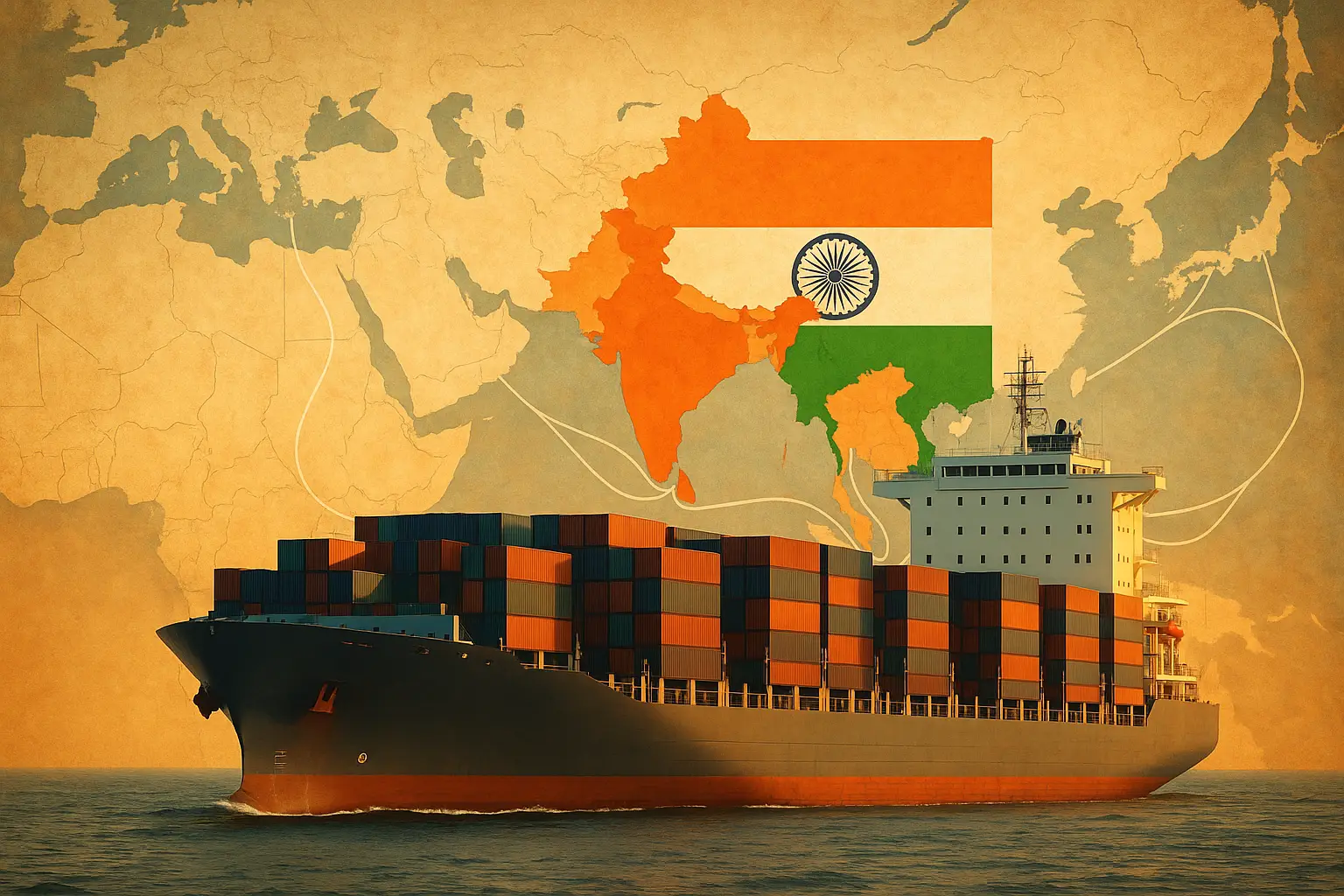As India launches its own container-shipping lines, the global logistics map is being quietly redrawn — and the ripple effects will be felt from Singapore to Southampton.
Could India’s debut in the container-shipping industry change the balance of global trade?
It’s not often that a country joins a sector dominated by global giants and immediately shakes the table — but that’s precisely what India is doing. Long known as a manufacturing powerhouse, India is now setting its sights on the high seas, launching national container-shipping lines to compete in an industry historically ruled by the likes of Maersk, MSC and COSCO.
This isn’t a vanity project. It’s strategy — pure and simple. With global trade routes in flux, fuel prices volatile, and geopolitical tensions rerouting cargo flows, India is betting big on becoming a shipping nation in its own right.
Why Now?
For decades, India has relied heavily on foreign carriers to move its imports and exports. Around 90% of India’s international trade by volume travels by sea, yet most of it rides on non-Indian vessels. That imbalance costs the country billions annually in freight charges — revenue that could be reinvested in domestic ports, shipbuilding and logistics.
But the tides are turning. Backed by the government’s Maritime India Vision 2030, India is pouring investment into deep-water ports, container terminals, shipyards and coastal shipping. The goal: to turn India from cargo client into shipping contender.
And the timing couldn’t be sharper. As traditional trade hubs like Singapore, Hong Kong and Dubai battle congestion and rising costs, India’s strategic location between Asia, the Middle East and Europe makes it a natural alternative for transshipment and direct liner services.
A New Maritime Strategy
India’s upcoming Bharat Container Shipping Line—a joint initiative involving the Shipping Corporation of India (SCI) and Container Corporation of India (CONCOR)—symbolises the country’s determination to control more of its supply chain.
The plan is to establish regular services linking Indian ports directly with key global destinations such as Rotterdam, Dubai and Shanghai. No more over-reliance on feeder services or foreign alliances. For Indian exporters, that means faster, cheaper, more predictable trade. For the global shipping community, it means competition — and competition means evolution.
India’s entrance also dovetails neatly with its Make in India initiative, boosting domestic shipbuilding and container manufacturing industries. The government has already introduced incentives for local yards to build modern container ships — and even floating dry docks are on the agenda.
Implications for Global Trade
If India succeeds, expect ripple effects across global shipping networks.
- For carriers: Established giants may need to rethink route strategy and alliances as Indian lines capture regional cargo volumes.
- For ports: Transshipment hubs like Colombo and Dubai could face tougher competition from upgraded Indian terminals at Mundra, Vizhinjam and Ennore.
- For shippers: New direct services promise faster transit times, lower costs, and more resilient supply chains.
But there are hurdles. India must scale up experience in fleet operations, maintain international service reliability, and build the digital infrastructure that modern carriers rely on. Still, the direction is clear — India is no longer content being cargo on someone else’s ship.
“India isn’t just entering the shipping industry — it’s rewriting the trade routes that connect East and West.”
India’s emergence as a container-shipping nation is both a pragmatic and political move. It’s about sovereignty over trade, economic leverage, and a seat at the global logistics table. For decades, the ocean highways were someone else’s business — but by 2030, don’t be surprised if India’s flag becomes a regular sight on the world’s busiest routes.




